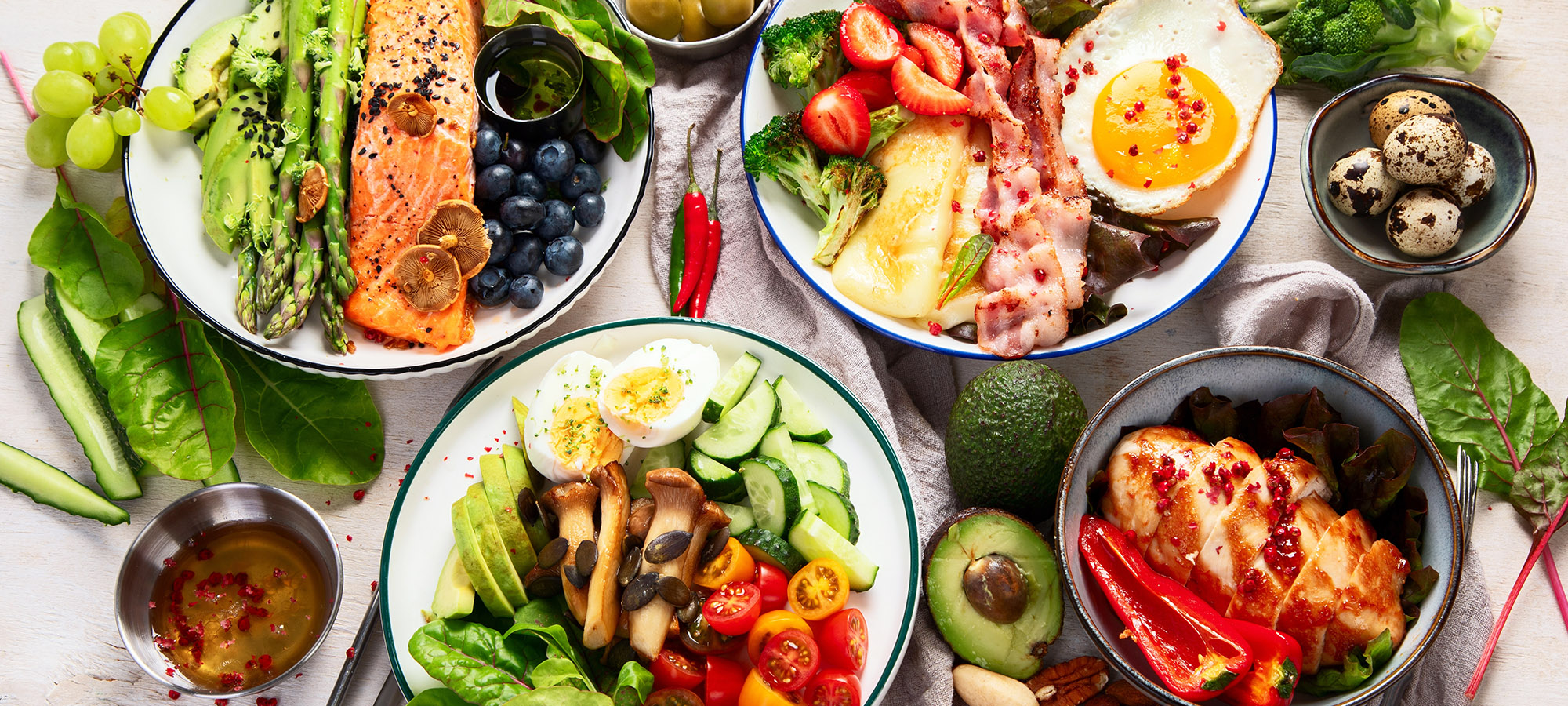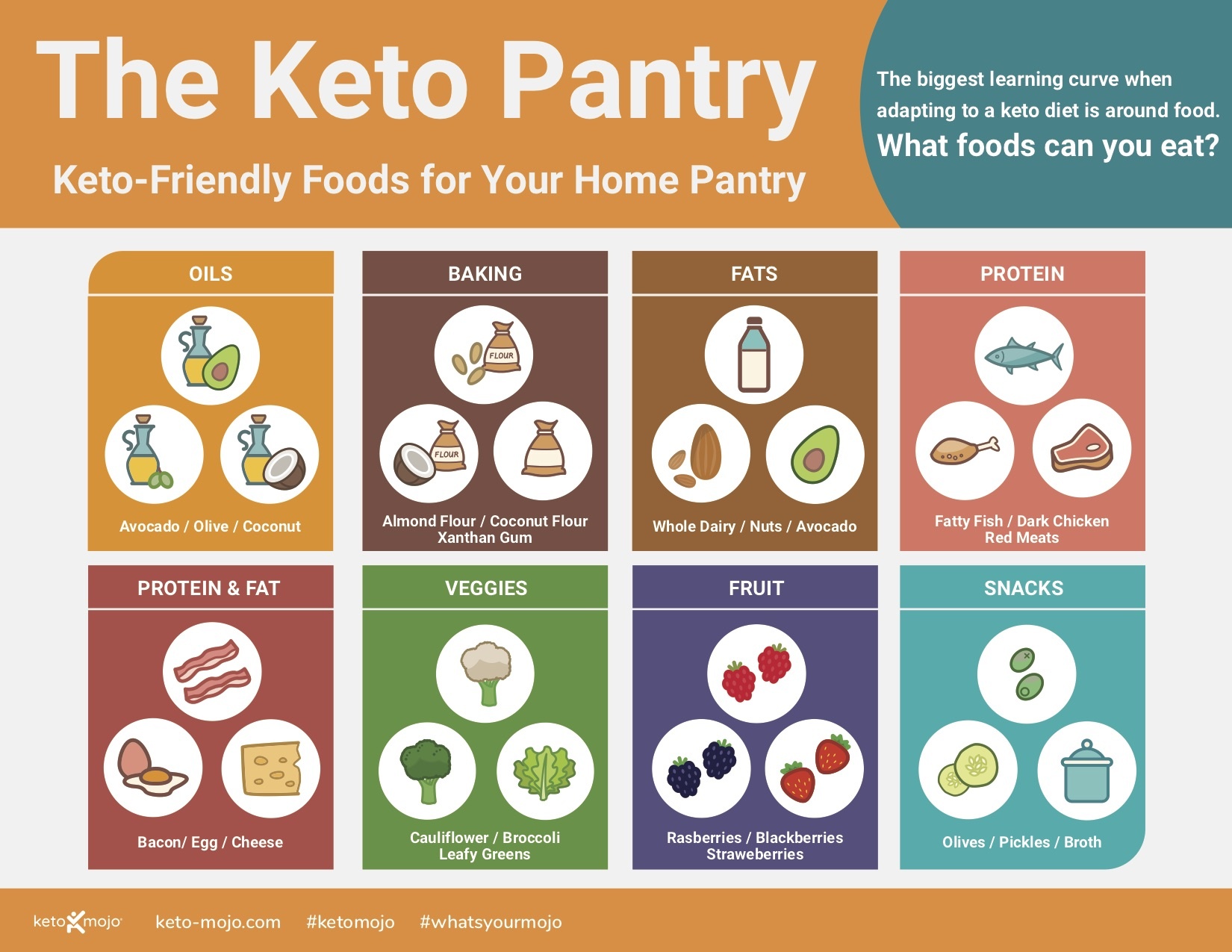The ketogenic diet––also known as the “keto diet” or “very-low-carbohydrate ketogenic diet”–– helps your body enter a metabolic state called nutritional ketosis. Achieving this state involves consuming a high-fat, moderate-protein, very low-carbohydrate diet. In ketosis, your body shifts its metabolism, focusing on using fat for energy, which leads to the production of ketone bodies as an alternative fuel source.
Ketones as a Source of Energy
Ketones, or ketone bodies, are produced by your liver from dietary fat as well as stored body fat. The three ketone bodies are beta-hydroxybutyrate (BHB), acetoacetate, and acetone.
Even on a typical higher-carb diet, your liver produces tiny amounts of ketones, typically overnight while you fast during sleep. However, when you drastically reduce your carbohydrate intake, your blood glucose and insulin levels drop, and your liver steps up its ketone production to supply your body and brain with energy. Once blood ketone (beta-hydroxybutyrate) levels reach 0.5 mmol/L, you are considered to be in nutritional ketosis. The range for nutritional ketosis is 0.5 to 5.0 mmol/L, which some experts now refer to as “euketonemia.”
Macros: Fat, Protein & Carbohydrates
Achieving and maintaining nutritional ketosis requires a commitment to understanding your body and determining the right balance of macronutrients (macros) it needs. There are a number of macro calculators available online, such as MyMojoMacros, that can help you determine how many calories and grams of fats, net carbs, and protein are required to fuel your body based on your height, age, weight, activity level, and nutrition goals.
For many people turning to keto to aide in losing weight and fat loss, changing to this way of eating will require a reduction in total calories––the majority of which will come from the elimination of carbohydrates in the diet. Fortunately, ketogenic diets have been shown to help reduce hunger and appetite, allowing you to naturally take in fewer calories without deliberately restricting them.
Treating Disease with the Ketogenic Diet
The ketogenic diet has been utilized in countries around the world for several different purposes. In the United States, much of the research on this diet focuses on its use for patients with epilepsy due to its effectiveness in reducing seizure activity in the brain. However, as rates of type 2 diabetes, obesity, heart disease, and other chronic conditions continue to rise in the United States and globally, research increasingly shows that ketogenic diets can be effective in treating these chronic diseases and reducing associated risk factors.
It’s important to recognize that your age, gender, family and personal medical history, and genetics can all influence how your body responds to the macronutrient balance needed to maintain ketosis. Be sure to discuss these factors with your healthcare provider or a dietitian who understands both your health history and the specifics of the ketogenic diet.
What Can I Eat on a Ketogenic Diet?
While the ketogenic diet is generally considered very high in fats, this is relative. Fats make up the largest percentage of your macros, making this a high-fat diet. However, a well-formulated ketogenic diet eating plan contains fresh vegetables as well as healthy fats, dairy, nuts, seeds, and protein foods. There are many vegetables that are keto-friendly. In addition to veggies, your meal plans can also small amounts of berries, if you choose. Unfortunately, many fruits are too high in carbs for a keto lifestyle.
Let’s move on to protein. It’s important to include a good source of protein––meat, fish, eggs, cheese, or Greek yogurt––at each meal. However, consuming too much protein can potentially impact your state of ketosis due to increasing insulin secretion. People that exercise vigorously, lift weights, or routinely run long distances require more calories from protein than those that live a sedentary lifestyle. Knowing what your actual moderate protein intake requirement is and sticking to it can help you succeed on your ketogenic journey.
Learn more about all the foods you can eat on a keto diet.
Getting All of Your Vitamins and Minerals on Keto
Another area to pay attention to on a ketogenic lifestyle is taking in the right amount of micronutrients. What are micronutrients? Micronutrients are the vitamins and minerals you need to maintain a healthy body. Leafy greens, other non-starchy vegetables, avocados, nuts, and seeds are ketogenic staples that provide you with fiber and essential vitamins and minerals to keep you at optimal health. Meat, seafood, and eggs are also rich in essential micronutrients. Generally speaking, you can meet all or most of your vitamin and mineral needs with food. However, occasionally you may want to supplement some of your micronutrients (especially sodium) depending on your diet and specific needs.
Keto: A Healthy Way to Eat and Live!
The ketogenic diet is a high-fat, moderate-protein, low-carb approach that emphasizes healthy fats, nutrient-rich vegetables, and quality proteins. By eating within your macros and planning meals to stay within your carb limit, it’s easy to follow and can be a sustainable lifestyle that can help you lose weight, improve your metabolic health, and enjoy greater vitality and quality of life.




